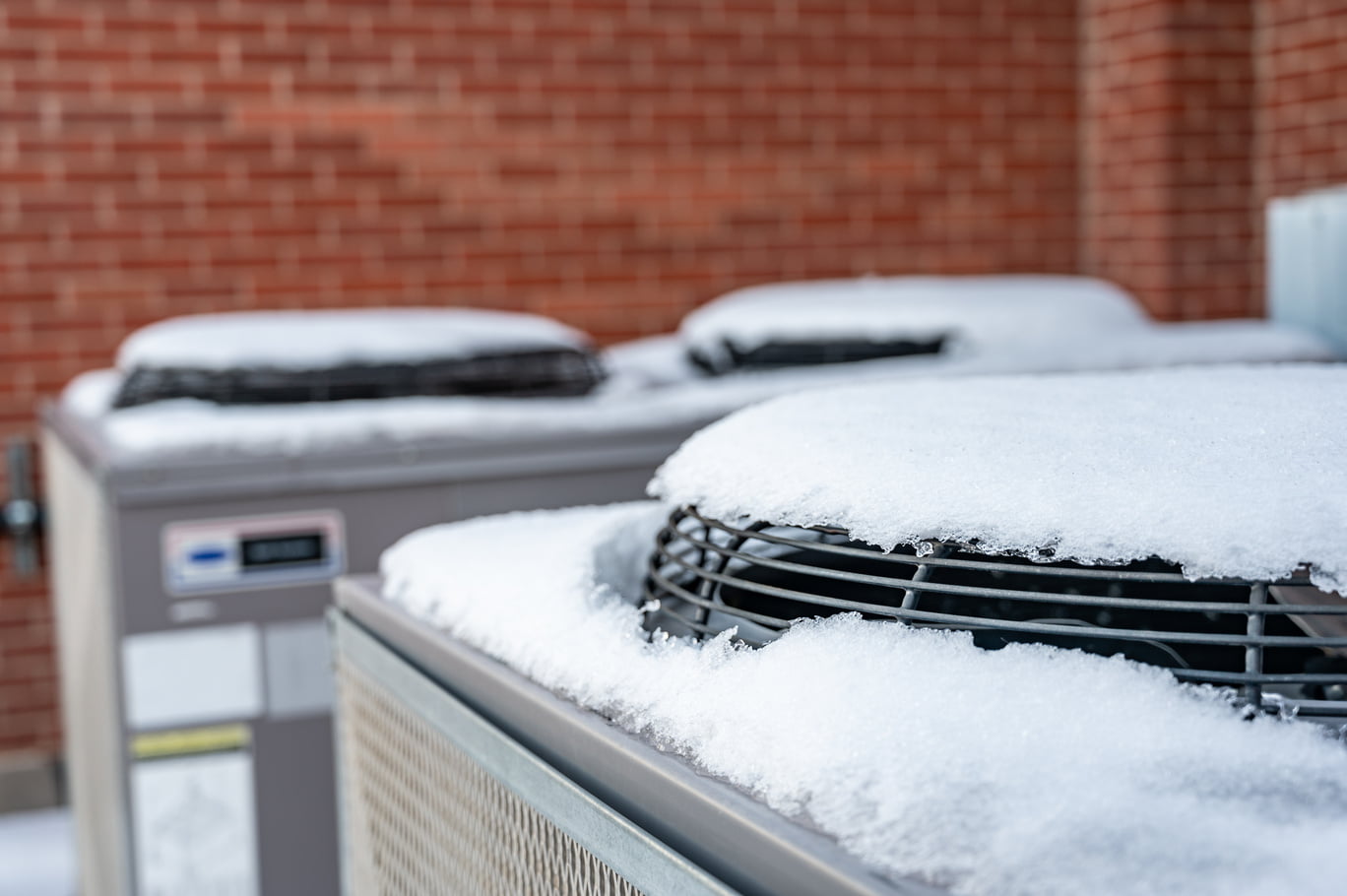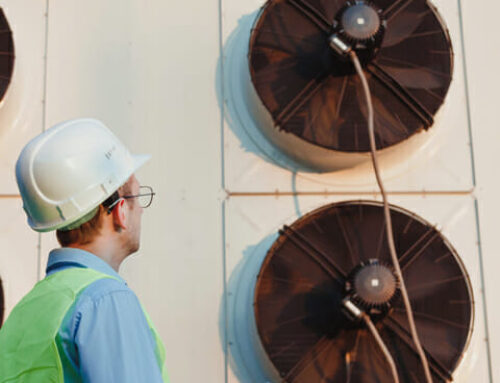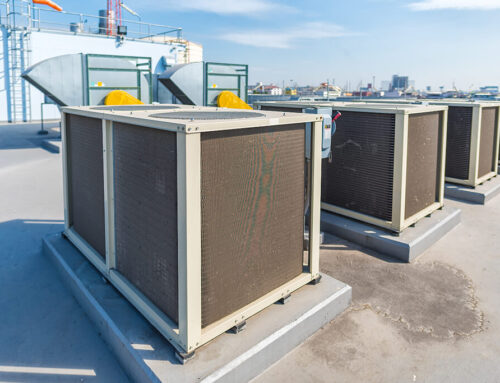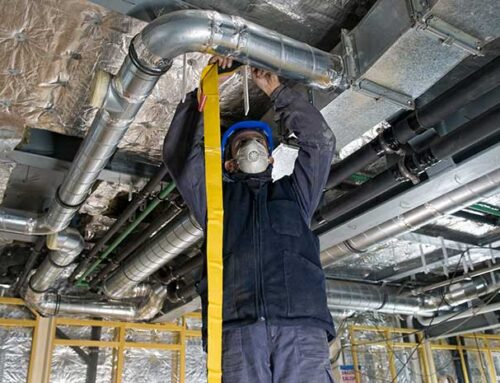Nearly 30% of energy costs in commercial buildings are due to heating, ventilation, and air conditioning (HVAC) systems. As temperatures drop to freezing in the fall, the efficiency of your HVAC system, including the outdoor unit and gas usage, can dramatically impact your bottom line. Preparing your commercial HVAC for winter isn’t just about saving on energy bills; it’s also crucial for preventing costly breakdowns, extending the life of your equipment, and taking care of gas and exterior components before spring. This ultimate checklist will guide you through essential steps to ensure your house system is optimized for the cold season ahead, keeping your home comfortable and your expenses in check.
Preparing Your Facility for Winter
Insulation Upgrade
Before the cold season hits, check your building’s insulation. This can make a huge difference in keeping heat inside homes and commercial buildings, reducing energy bills. If you find any gaps or old insulation in your home or commercial buildings, now is the time to upgrade. Proper insulation in a home also prevents water from freezing and causing damage to wood.
Upgrading doesn’t just mean adding more material. Sometimes, it means replacing what’s there with something better. Look for signs of wear or damage in your home’s current wood insulation.
Clear Gutters
Gutters full of leaves can lead to ice dams in winter. These blockages cause water to back up and potentially enter your home, leading to costly damages. Before snowfall begins, ensure home gutters and drainage systems are clear.
This task might seem small but plays a big role in preventing water damage. It helps manage melting snow and spring rains efficiently.
Stock Supplies
Winter weather calls for extra precautions on walkways around your facility.
-
Salt or sand improves traction on icy surfaces.
-
Keep enough supplies on hand before the first freeze hits.
Having these materials ready ensures safety for everyone at your property during slippery conditions.
Checking and Sealing for Leaks and Cracks
Inspection Process
Conducting a thorough inspection is crucial. Check windows, doors, and walls carefully. Look for any signs of air leaks. This step can save energy and reduce heating costs significantly.
After identifying potential leaks, it’s time to seal them. Use weatherstripping or caulking for effective sealing. These materials are affordable and easy to apply. They make a big difference in keeping the cold out.
Advanced Detection
Sometimes, leaks aren’t visible to the naked eye. That’s where a blower door test comes in handy. It helps detect less obvious air leaks by creating pressure differences.
Performing this test requires specialized equipment and expertise but is worth it. It ensures that no stone is left unturned in your winterization process.
Here are some tips when dealing with cracks:
-
Check the exterior of your building as well.
-
Pay attention to shingles, concrete, and trim.
-
Repairs should not be delayed to prevent water damage.
Insulating Ducts in Your Commercial HVAC System
Wrap Ductwork
Wrapping exposed ductwork is vital. Use proper insulation material. This keeps heat from escaping. It saves energy and money.
Properly insulated ducts maintain temperature better. They make your commercial HVAC system efficient during winter.
Seal Joints
Sealing all duct joints is a must. Use mastic tape or foil-backed tape for this job. Sealed joints prevent air leaks.
Air leaks can lead to higher energy bills and an overworked HVAC system. Sealing helps avoid these issues, keeping the system running smoothly.
Regular Inspections
Inspecting insulation regularly is crucial. Look for damage or wear at least twice a year.
Damaged insulation can’t protect as well against the cold. Checking ensures that your system remains efficient throughout winter.
Smart Thermostat Installation for Winterization
Programmable Thermostats
After ensuring your ducts are well-insulated, the next step is installing a programmable thermostat. This device lets you set heating schedules. It means your commercial HVAC system works only when needed.
For instance, program it to reduce heating at night or during unoccupied hours. This simple change can lead to significant energy savings. Plus, it helps in maintaining a comfortable temperature when people are present.
Zoned Heating Control
Smart thermostats offer more than just programmable schedules. They allow for zoned heating control too. This feature is perfect for large spaces with different heating needs.
Imagine having separate temperature settings for office areas and warehouses within the same building. Each zone can have its own schedule and temperature setting, optimizing comfort and efficiency. It’s especially useful in commercial settings where different areas have varying occupancy and thermal requirements.
Monitoring Energy Usage
Lastly, smart thermostats come with apps that let you monitor your energy usage closely. These apps provide insights into how your HVAC system performs over time.
You might discover that certain areas of your building use more heat than necessary. Or find out the best times to adjust temperatures for maximum efficiency without sacrificing comfort. This data-driven approach allows for continuous improvement in managing winterization efforts effectively.
Preventative Maintenance for Your Commercial HVAC Unit
Filter Replacement
Replacing filters is crucial. Do it every 1-3 months. This keeps the air clean and your system efficient.
Not changing filters can lead to poor air quality. It also makes your commercial HVAC work harder. This increases energy bills.
Motor Care
Motors and bearings need regular lubrication. This prevents sudden failures.
Without lubrication, parts wear out faster. They might even break down during peak winter times.
Professional Checks
Before winter hits, get a professional inspection done on your heating system. Experts catch issues you might miss.
A professional maintenance check ensures everything runs smoothly. They focus on both the indoor and outdoor unit of your commercial HVAC system.
By following these steps, you ensure that after installing smart thermostats, as mentioned before, your commercial HVAC unit remains in top condition throughout the cold season.
-
Replace filters regularly.
-
Lubricate motors and bearings.
-
Schedule a professional inspection before winter starts.
These actions prevent unexpected breakdowns and maintain efficiency. Remembering to care for both indoor and outdoor units is key to a warm, safe winter in your commercial space.
Minimizing Heat Loss in Your Commercial Building
Thermal Barriers
Installing thermal curtains or blinds on windows is a smart move. These act as barriers, keeping the warmth inside and the cold outside. This simple step can significantly reduce your heating costs.
For businesses with large glass surfaces, this is especially important. Restaurants with patio doors or offices with floor-to-ceiling windows benefit greatly. Not only do thermal curtains add an aesthetic touch, but they also boost energy efficiency.
Entryway Solutions
Having airlocks or vestibules at entryways minimizes cold air intrusion every time someone enters or exits your building. Think of it as creating a small buffer zone that traps cold air before it can infiltrate your workspace.
This method is particularly effective for commercial buildings frequented by customers throughout the day. It keeps employees comfortable and reduces strain on your HVAC system.
Window Upgrades
If your building still has single-glazed windows, consider upgrading to double-glazed versions. Double-glazing adds an extra layer of insulation, which helps maintain indoor temperatures.
This upgrade might seem costly at first glance but pays off in the long run through reduced energy bills and improved comfort levels within the building.
Emergency Planning for Winter Shutdowns
Critical Operations
Developing a plan is crucial. It ensures your business stays up, even when the HVAC system doesn’t. First, identify which operations must keep running no matter what. This might include areas that require constant temperature control or spaces housing sensitive equipment.
Next, train your staff on this plan. They should know exactly what to do in an outage scenario. This includes understanding where the shut-off valves are and how to operate them safely.
Emergency Contacts
Keeping a list of emergency contacts is a good idea. Include HVAC professionals who can help quickly if there’s damage or an urgent need for repairs. Also, add utility companies and other relevant services to this list.
It’s also wise to train multiple team members on whom to call and what steps to take during an emergency. This way, you’re not relying on just one person who might be unavailable when needed most.
Scheduling Professional HVAC Maintenance
Pre-Winter Check-Up
Booking a pre-winter check-up is crucial. It ensures your system runs smoothly throughout the cold months. Make an appointment with a certified HVAC technician early. This avoids the rush and ensures you get a slot.
During this visit, the technician will assess your system’s efficiency. They look for any potential issues that could cause trouble during winter. Identifying problems early can save time and money.
Efficiency Assessment
The technician’s assessment focuses on how well your system performs. They check if it heats adequately without wasting energy. If they find inefficiencies, they’ll suggest ways to improve performance.
This might include cleaning parts or adjusting settings for better heat distribution.
Upgrades Discussion
Sometimes, upgrades or replacements are necessary for optimal performance. Discuss these options with your professional during their visit.
-
Pros of upgrading: improved efficiency, lower energy costs
-
Cons of not upgrading: higher bills, frequent repairs
Upgrading can seem costly initially but saves money in the long run.
Final Remarks
Winterizing your commercial HVAC system might sound like a massive undertaking, but it’s your best bet against the cold bites of winter. By following the steps we’ve laid out—from sealing leaks to scheduling professional maintenance—you’re not just preparing for the chilly season; you’re also ensuring your system runs efficiently, saving you bucks on energy bills. Think of it as putting on your building’s winter coat; it’s all about keeping the warmth in and the cold out.
Now, don’t let winter catch you off guard. Take action today! Schedule that professional maintenance and start ticking off items from this ultimate checklist. Your future self will thank you when your building stays cozy without breaking the bank. Remember, a stitch in time saves nine, and in this case, a well-maintained HVAC system saves a ton in energy costs. Let’s get winter-ready!






